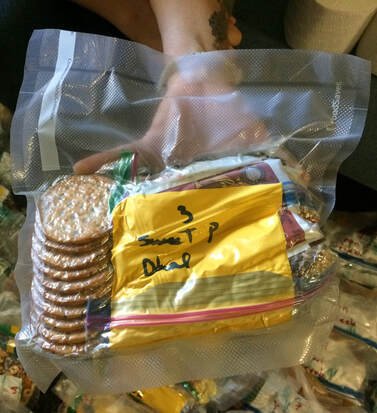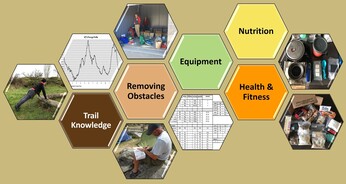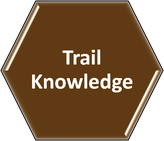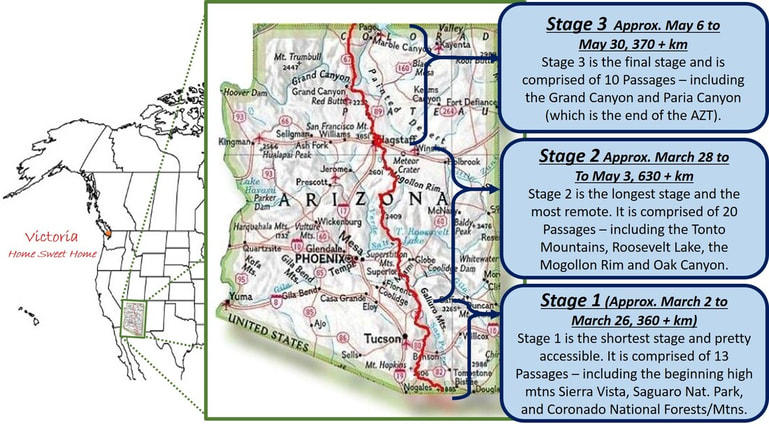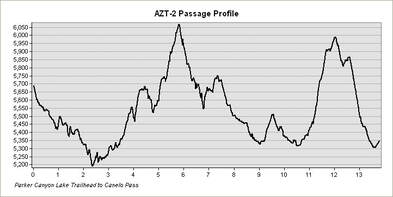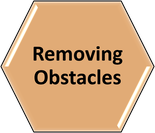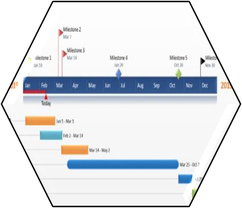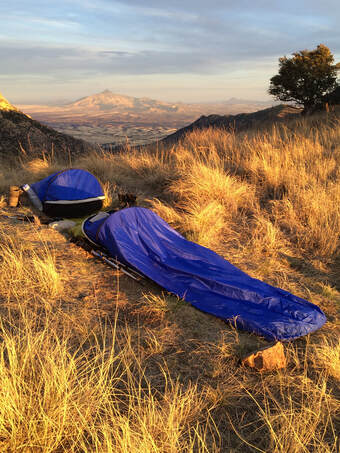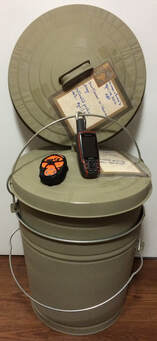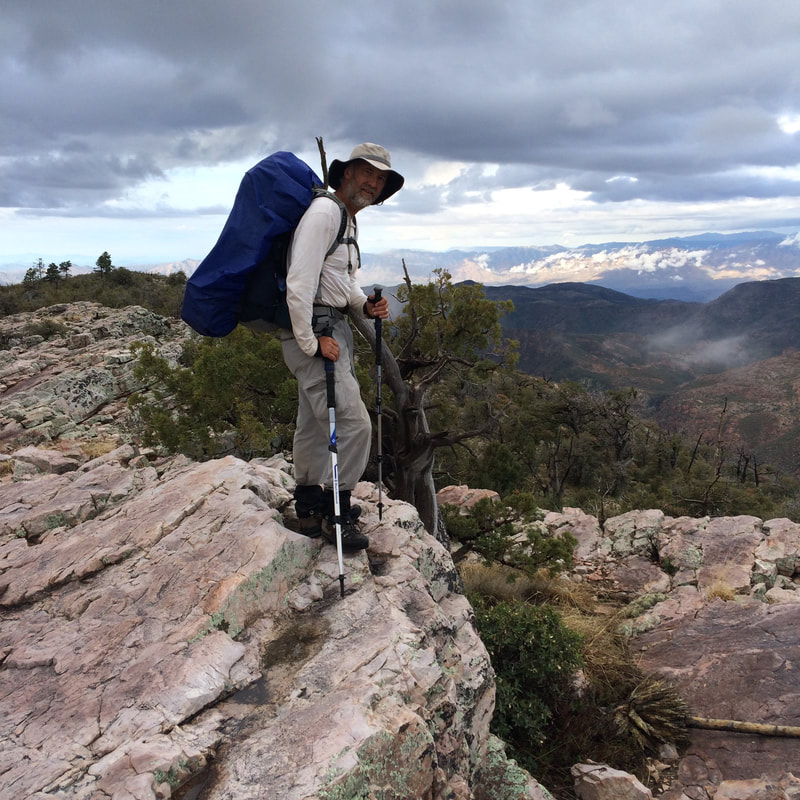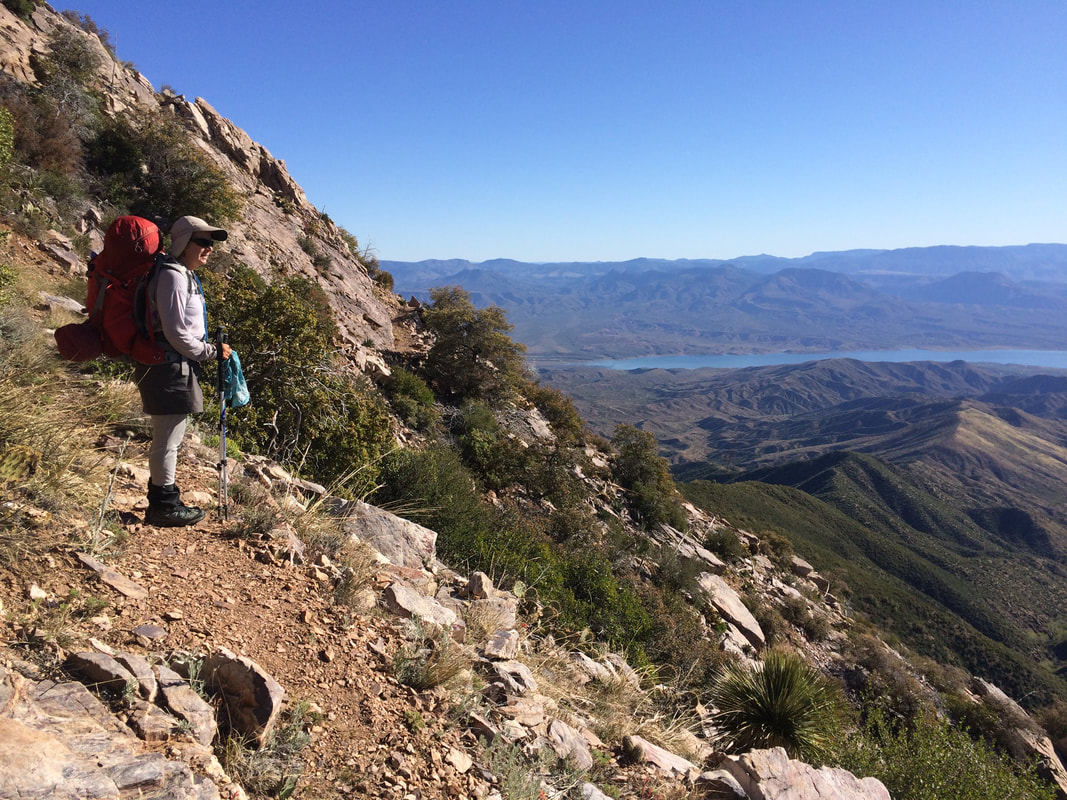|
Thanks to the great work of the AZT association (website) and their members (Facebook, YouTube videos, and various blogs). These sources provided most of the information needed to create our planning worksheets. The book, Your Complete Guide to the Arizona National Scenic Trail, by Mathew J. Nelson of the Wilderness Press, gave us a good understanding of the trail passages, the trail quality, and generally what to expect hiking in this stunning environment.
We create two key worksheets to help with all other preparation steps: an 'AZT Worksheet' and our more detailed 'AZT Itinerary'. The latter included daily and passage distances, trail difficulties, water sources (and their reliability), partner communities, and food cache locations. For planning purposes, we calculated an average of 25 km/day. |
|
We divided the trek into three sections (the Mexican border to Oracle, Oracle to Flagstaff, Flagstaff to Utah border) and planned to drop our caches (17 in all) by car prior to trekking each section. Our vehicle was then parked in Oracle for the first section, and then in Flagstaff during the final two sections.
Reservations were needed for camping in two National Parks: Saguaro and the Grand Canyon. The trail crossed Bureau of Land Management (BLM) land, and a permit was recommended for using this land and for camping along the trail (15 feet from the trail). This permit was purchased at the land management office in Tucson. |
Financial:
- Basic costs for BLM permit ($15) and passes for the 2 national parks. We also reserved a few campgrounds (in Patagonia, and Sevilla at the Colossal Caves).
- The Saguaro N. P. campsites needed to be reserved ahead of time, but the park rangers were flexible when we had to change the dates.
- The Grand Canyon provides a first come first serve access for thru-hikers. A few campsites are available each day. For, in early May, the wait list was fairly short. We waited 2 days for our 2 camping permits. For a single day crossing the wait time was only one day – we chose shorter days and appreciate The Grand Canyon.
- We planned on having rest days in the communities along the way, accommodations were booked, some ahead of time, others onsite.
- We hired 2 shuttles. One to get us from Oracle to the Mexican border at the beginning of the trek. The second shuttle was taken from Flagstaff back to Oracle for the second section. When we completed our trek, we hitched a ride from the Vermillion cliffs to Page where we rented a car to get back to Flagstaff where our car awaited us in storage.
- As we were crossing the US border (we came from the Vancouver, Canada area), we chose to drive our supplies through customs and down to Arizona. The drive took about 4 days. Incurred costs included fuel, food, and accommodations.
- We took the time to dehydrate all our meals at home, significantly reducing our food budget.
|
Time Commitment:
|
Health and Fitness:
- The AZT traversed the mountains and lowlands of the desert. The elevation gain is equal to climbing three Mount Everests. Powerful legs and a strong heart were a must.
- Given our age group, our fitness routine was intensified for approximately six months and comprised strength, endurance, and mobility components to meet the rigors of this trail.
- This trail was a wilderness trail where orienteering was needed for some passages.
- The temperature extremes caused significant challenges such as dehydration and hypothermia.
- Backcountry camping skills were a must, as were ‘leave no trace ‘camping practices.
- This was rattle snake country. It was important to know how to camp safely and how to deal with encounters.
|
On the AZT, we carried all our equipment in our backpacks. Every piece of gear was weighed and considered.
For all our gear and carry weight, refer to our equipment list. There is additional information in our 'Equipment Section'. |
|
We calculated a menu of 3,000 to 3,500 Cal/day. After a few weeks we adjusted Simon’s caloric intake to approx. 5,000 Cal/day - he was losing too much weight. This was done by adding cheese and peanut butter.
Our menu plan for this trek included home dehydrated morning and evening meals, and snacks such as nuts, dry fruit, and sausages. Our daily food portions were packaged individually. Click on these words for details about our menu and our meal plan for each cache. |
|
This was a challenging trek. Our winter fitness program built a good base. But as the new year came about, we started increasing our workouts. Our resistance training consisted of free weights. Our fitness routine (4 times a week) incorporated exercises to challenge upper and lower body muscle groups. Core work was performed daily, as was balance work. Stretching and foam rolling finished off this part of the routine. Climbing stairs and long hikes with a weighted pack rounded out our training. Stair climbing was performed 4-5 times a week and hiking with weights 3 times a week. We gradually increased the time/distance, and the carry weight during these sessions. This aided our bodies to adjust to the added weight of the pack while climbing and descending mountainous terrain. An important part of this program was rest (active rest days, and good sleep habits). Restorative techniques such as regular massages, hot baths, and good nutrition were equally important. Without these, we risked overtraining and become injured or sick. For detailed information on our exercise routines check out our 'Exercise' page. |

